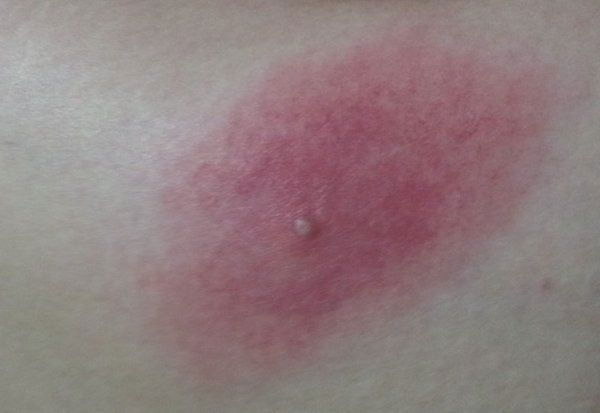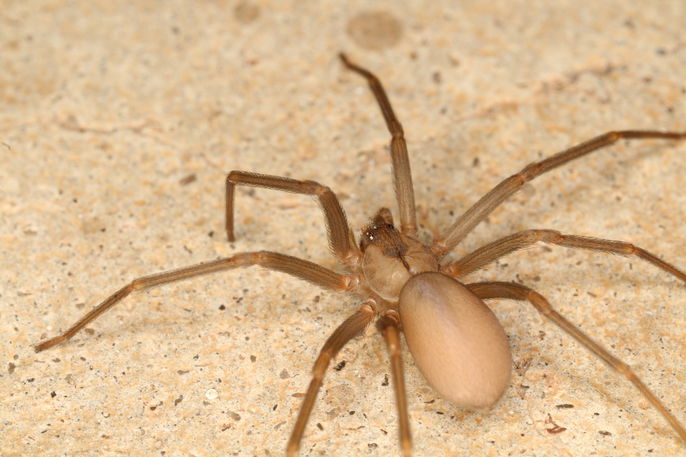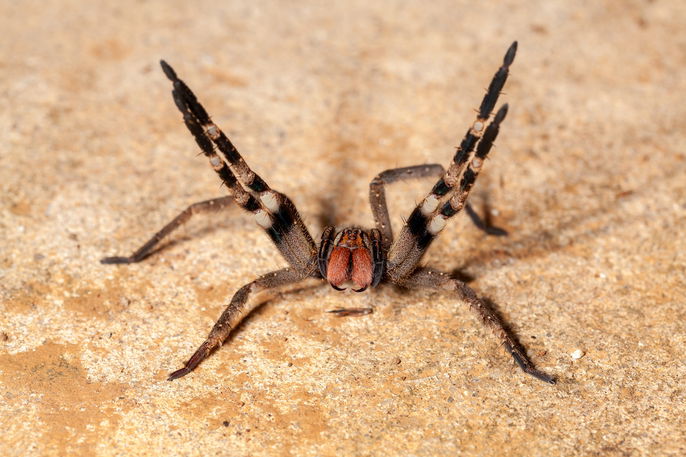Spider bites are characterized as a small skin wound associated with symptoms like local swelling and redness. Many people will often only notice a spider bite after a few hours, especially if the bite came from a common, non-poisonous spider.
Although this can be a stressful occurrence, spider bites are relatively common and, most times, are not caused by poisonous spiders. Nonetheless, it is important to monitor the bite for signs of a serious bite, like intense pain, cramping, nausea or fever.
In any case, if you suspect you have been bitten by a spider, you are advised to proceed to a hospital for assessment, to rule out a poisonous spider bite.

Main symptoms
The common symptoms of a spider bite include:
- Mild skin swelling
- Redness around the area
- A small skin wound
- Pain or itching in the area
It is also important to try identifying the type of spider that caused the bite, as this will help to guide treatment if the bite came from a poisounous spider. If possible, take a picture of the spider to show the doctor, as this will guide treatment and speed-up recovery.
Symptoms of a poisonous spider bite
The symptoms of a poisonous spider bite tend to be more intense than those of a common spider. You may notice additionally symptoms like blisters, sweating, difficulty breathing, fever, pain, cramping, abdominal stiffness, nausea or vomiting.
First aid for spider bite
To treat a spider bite, you should:
- Wash the bite area with soap and water
- Elevated the affected member, if possible
- Do not tighten or tie up the area with the bite
- Do not try to extract the spider venom
- Apply cold compresses or a clean cloth wet with warm water to relieve local pain and swelling
If you suspect you have been bitten by a poisonous spider, proceed immediately to the closest hospital for prompt treatment.
How to identify a poisonous spider
The two most common poisonous spiders in the US are the black widow and the brown recluse spiders. You can read more about them below:
1. Black widow

These spiders can be found throughout the US, but are most seen in the southern and western parts of the country. They are characterized by a black body with a red pattern on the underside.
Where they’re found: They are found in outdoor setting in dark places with little disturbance, like woodpiles, under eavestroughs, and under the patio.
Symptoms of a bite: This bite causes two puncture marks in the skin, through which the spider inserts a neurotoxic venom. This venom causes pain in the area that radiates to the rest of the body, like the chest and abdomen.
Special treatment: Treatment is done in a hospital setting with local analgesics injected directly in the area of the spider bite. This helps to reduce pain, which usually resolves within 3 hours of the initial incident. IV fluids are only needed in cases in which the patient presents with a decreased heart rate or shortness of breath.
2. Brown recluse

The brown recluse spider is commonly referred to as the violin spider, as it has a characteristic violin pattern on its head. They also have 6 eyes that can be easily identified, as most spiders will have 4 or 8 eyes. The brown recluse is commonly found in the mid-western and southern parts of the US.
Where they’re found: Similar to the black widow, they can be found in dark, dry areas like woodsheds, wall voids and crawlspaces.
Symptoms of a bite: This spider can only bite if it is held against the skin with pressure. The bite stings and causes pain right away due to the venom being inserted, and is followed by a blister that develops at the site. The venom can kill skin cells in its area and cause a severe wound due to necrosis.
Special treatment: Bites that do not cause open sores can be treated conservatively with cold compresses and analgesics. However, those that are left untreated and cause open sores require more invasive treatment that involves removing any necrotic tissue. Larger wounds may even require skin graft surgery.
How to prevent
To prevent spider bites, it is important to keep your house clean and your land clear. Dirty and humid areas are where spiders most prefer to reproduce and live. Debris piles or wood piles also promote spider proliferation, and therefore people who work close to these types of environments are more likely to experience a spider bites. In general. you should avoid having debris piles in or outside your home.
People who live or travel in areas with known spider infestations should shake their clothing and shoes before putting them on.






























